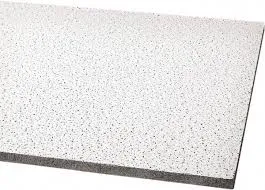9 月 . 04, 2024 03:02 Back to list
standard ceiling access panel sizes
Understanding Standard Ceiling Access Panel Sizes
Ceiling access panels are essential components in both residential and commercial buildings, providing crucial access to hidden areas such as plumbing, electrical systems, and HVAC components. Knowing the standard sizes of these access panels is important for proper installation and functionality. This article will explore the common sizes of ceiling access panels, their applications, and considerations for selection.
Common Sizes of Ceiling Access Panels
Standard ceiling access panels typically come in sizes that are not only versatile but also convenient for various purposes. The most common dimensions include
- 12 x 12 (1' x 1') - 14 x 14 - 16 x 16 - 18 x 18 - 24 x 24 (2' x 2')
These sizes are widely used in the industry, making them readily available and often more economical than custom options. The 24 x 24 panel is particularly popular in commercial settings, allowing easy access to larger infrastructures like ductwork or plumbing fixtures.
Applications of Ceiling Access Panels
Ceiling access panels are commonly used in various settings, such as
- Residential Homes Homeowners often use smaller panels (12 x 12, 14 x 14) in utility rooms, kitchens, or bathrooms where access to plumbing and wiring is necessary. - Commercial Buildings Larger access panels are typically found in offices and industrial spaces for easier maintenance of HVAC systems, electrical installations, and data cabling.
- Healthcare Facilities In hospitals or clinics, access panels must often accommodate maintenance personnel while ensuring compliance with stringent safety and hygiene standards
.standard ceiling access panel sizes

Considerations for Selection
When selecting an access panel, several factors warrant consideration
1. Location Determine where the panel will be installed. The size should be proportionate to the access needed for maintenance or inspections.
2. Materials Access panels are available in various materials such as steel, aluminum, and plastic. The choice of material should depend on the environment and the amount of traffic the panel will experience.
3. Type of Finish Some panels come with a textured surface or are paintable, which can help them blend into the ceiling, especially in residential applications.
4. Load Rating In certain areas, especially where foot traffic is expected, it’s vital to choose panels that can carry the required loads.
5. Ease of Installation Check the installation requirements of the panel. Some designs allow for easy access while requiring minimal tools for installation.
Conclusion
In summary, selecting the right size and type of ceiling access panel is crucial for maintaining efficient building infrastructure. By understanding standard sizes and their applications, homeowners and contractors can ensure seamless access to critical systems while maintaining the aesthetic and structural integrity of the ceilings. Whether in a home or a commercial setting, the proper access panel contributes significantly to the maintenance and functionality of vital building systems.
-
Revolutionizing Interior Design with Ceilings t grid Suspended SystemNewsOct.29,2024
-
Revolutionizing Ceiling Design with ceiling access panel with Gypsum Tile WaterproofNewsOct.29,2024
-
Revolutionizing Interior Design with PVC Gypsum Ceiling: A Comprehensive GuideNewsOct.29,2024
-
Elevating Interior Design with High quality Mineral Fiber Ceiling TilesNewsOct.29,2024
-
Revolutionizing Interior Design with PVC Gypsum Ceiling: A Comprehensive GuideNewsOct.29,2024
-
Elevating Interior Design with High-Quality Mineral Fiber Ceiling Tiles: A Comprehensive GuideNewsOct.29,2024







